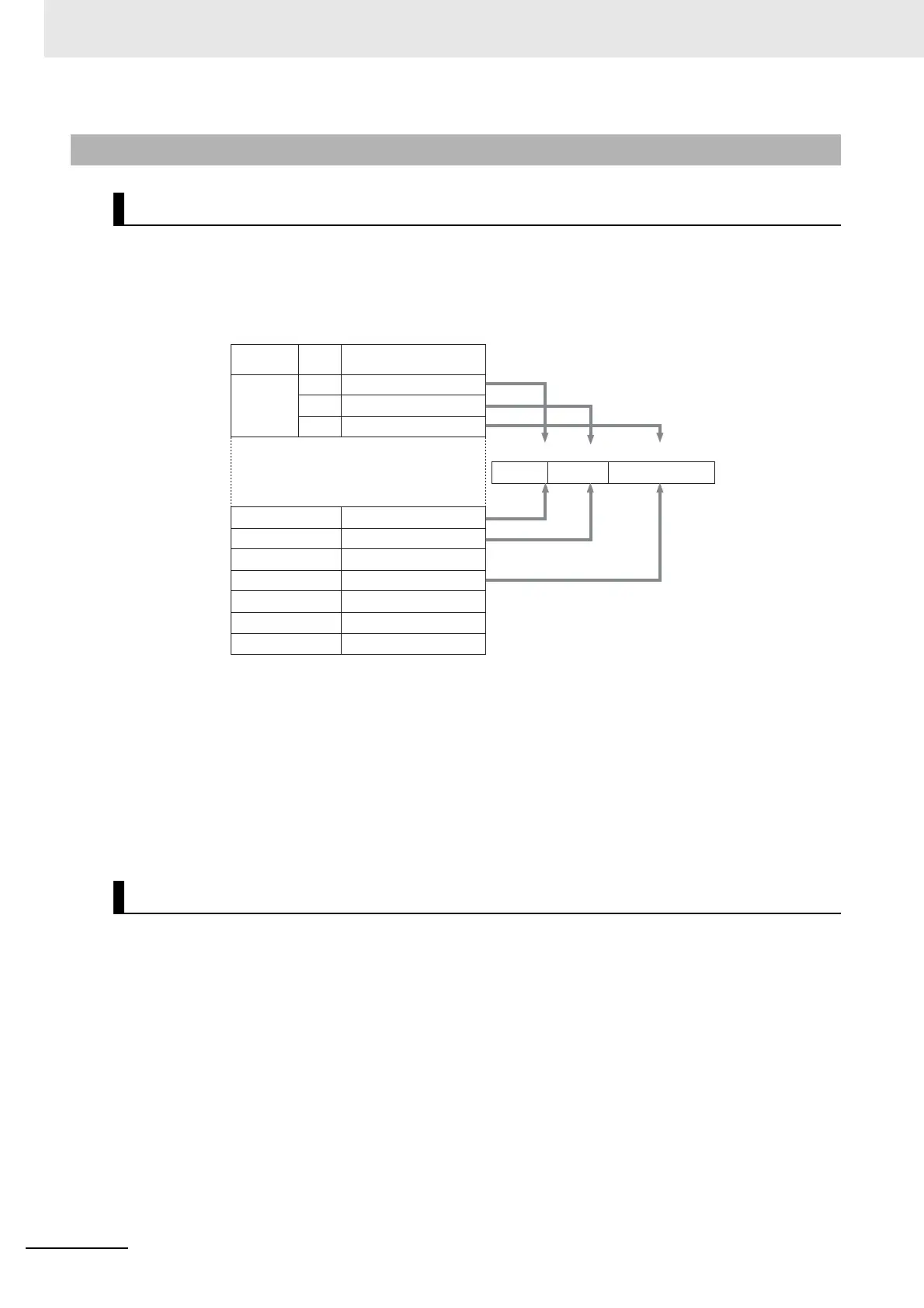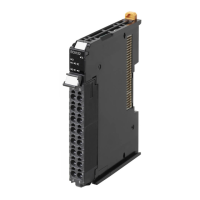8 EtherCAT Communications
8 - 8
NX-series EtherCAT Coupler Unit User’s Manual (W519)
You can assign more than one PDO to an EtherCAT slave.
Here, PDOs are assigned to index 1C12 hex for the RxPDO, and 1C13 hex for the TxPDO.
The following example shows how PDOs are assigned.
In this example, three PDOs (PDO A, PDO B, and PDO D) are assigned to index 1C13 hex (for the
TxPDOs).
Similarly, a PDO (for the RxPDO) is assigned to index 1C12 hex.
These assignments determine the PDOs to use for communications between the EtherCAT master and
slave.
In an EtherCAT Slave Terminal, PDOs are assigned by default to the EtherCAT Coupler Unit and each
NX Unit. These PDOs determine both the RxPDOs and TxPDOs that are used for communications with
the EtherCAT master.
You can use the Sysmac Studio to change the default PDO assignments for each Unit that allows
changes to the PDO mappings.
To change PDO assignments for EtherCAT Slave Terminals on the Sysmac Studio, use the I/O alloca-
tion settings on the Edit Slave Terminal Configuration Tab Page.
Refer to 9-2-4 I/O Allocation Information on page 9-13 for information on editing I/O allocation settings.
8-4-3 Assigning PDOs
Scheme for Assigning PDOs to EtherCAT Slaves
Assigning PDOs to EtherCAT Slave Terminals
2
3
1
PDO B
PDO C
PDO A
PDO E
PDO D
PDO A
PDO B
PDO D
Index
Sub-
index
Object contents
Sync Manager PDO
assignment objects
Mapping objects
PDO G
PDO F
Sync Manager entity Z
1C13 hex
1A00 hex
1A01 hex
1A02 hex
1A03 hex
1A04 hex
1A05 hex
1A06 hex
1A00 hex
1A01 hex
1A03 hex

